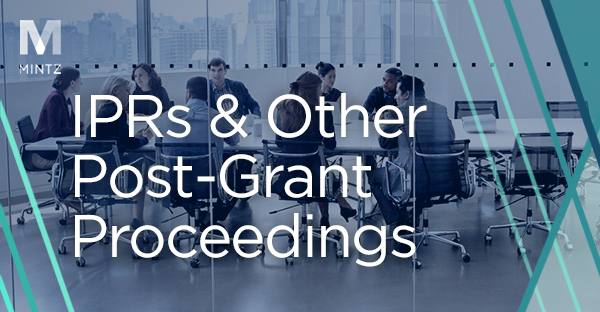Tip #3 for Avoiding IPR Institution: Use Disclaimers Strategically
Under U.S. patent law, “No inter partes review will be instituted based on disclaimed claims.” 37 C.F.R. § 42.107(e). And petitioners only need to demonstrate a reasonable likelihood of prevailing with respect to one challenged claim in order to secure a favorable institution from the PTAB. 35 U.S.C. § 314. Therefore, one potential strategy for avoiding an IPR institution is to disclaim some—but not all—of the challenged claims.
Take the situation where there is a pending IPR Petition against your patent, and you determine that there are two categories of challenged claims: a first set for which you have strong arguments against institution because the claims all recite a key limitation that is missing from the asserted prior art; and a second set for which you have weak arguments against institution because the prior art appears to meets all of the required claim limitations. In the not-so-distant past, you could file a Preliminary Response arguing against institution of both sets of claims, and, critically, the PTAB could issue what was called a “partial institution,” in which the Board would institute the requested IPR on only some of the challenged claims. In our example taken back in time, the PTAB might institute an IPR on the weaker set of claims, but decline to institute against the stronger set of claims, leaving you free to litigate or license those stronger claims without the specter of an IPR looming over them.
But the Supreme Court changed all that in its 2017 SAS Institute, Inc. v. Iancu decision. There the Court held that the PTAB had no authority to issue partial institutions, and that if the PTAB instituted an IPR against any challenged claim, it must institute the IPR against all of the challenged claims. Post-SAS, it does not matter that a Petition only establishes a reasonable likelihood of success against a weaker claim and does not identify sufficient evidence to invalidate the stronger claims; if the Petition is instituted against any claim (even a weak one), then the Board must be institute on all proposed grounds, including the stronger claims that would otherwise not be part of a post-grant proceeding. As a result, a reasonable likelihood that the Petitioner will prevail against just one weak claim can now drag a host of strong claims into an IPR. Going back to our example, your strong arguments against institution for the first set of claims become irrelevant because institution will depend only on the weaker sets of claims, regardless of how convincing your arguments may be in support of the stronger ones.
This is where a disclaimer may be helpful. Under 35 U.S.C. § 253(a), a patent owner may file a statutory disclaimer disclaiming one or more claims in a patent. And, as mentioned, under 37 C.F.R. § 42.107(e), the PTAB cannot institute an IPR based on disclaimed claims. Therefore, if you disclaim the weaker challenged claims as part of your response to the Petition, those claims can no longer form the basis of PTAB’s decision to institute, and they can no longer drag your stronger claims into an unwarranted IPR. After you disclaim the weaker claims, institution will depend on the strength of your arguments concerning the remaining challenged claims as chosen by you, and not on the weakest claims initially chosen by the Petitioner.
As always, there are pros and cons that must be considered before committing to a disclaimer strategy. For example, in the Federal Circuit’s 2018 Arthrex v. Smith & Nephew decision, the Federal Circuit decided (over the vigorous and reasoned dissent of Judge Newman) that the PTAB could consider a disclaimer of all challenged claims as a request for an adverse IPR judgment under 37 C.F.R. § 42.73(b), which could lead to undesirable estoppel effects.
In some situations, however, a disclaimer of some challenged claims may allow a Patent Owner to avoid an institution decision while retaining a strong set of claims to assert and/or license, free of the uncertainty and potential delay that accompanies an instituted IPR.
Look out for our next post: Tip #4 for Avoiding IPR Institution: Don’t Get into a “Battle of the Experts.”
* The content of this post does not constitute legal advice and we recommend you discuss options with your attorney prior to making legal decisions.

Tip #4 for Avoiding IPR Institution: Don’t Argue Facts
November 9, 2020| Blog|



